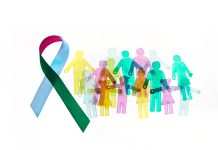The link between food insecurity and diabetes is stronger than previously thought – with people who are more likely to be hungry experiencing a higher rate of diabetes, ten years on
While the majority of Western countries are back to business as usual, COVID-19 continues to devastate vulnerable communities. Diabetes, considered a shadow epidemic across the world, is one of the key risk factors for COVID hospitalisation and death. Since diabetes is also a disease that crops up among poorer communities, researchers are constantly examining how to decrease prevalence of the disease – with the urgent goal of protecting as many lives as possible.
While food insecurity – the lack of access to nutritional and affordable food – has always been linked to health issues, this is one of the first studies to hint at a causal relationship with diabetes.
Past experience of famine previously linked to generation likelihood of diabetes
In data analysed by Washington State University, the connection between food insecurity and diabetes is stronger than ever.
Research has previously established a link between ancestral hunger, specifically the experience of famines, to increased likelihood of diabetes in future generations. Now, researchers in the US have identified how the relationship between food insecurity and diabetes can come into existence, within the space of just a decade.
The findings, published in the Journal of Nutrition, suggest that young adults who were facing food insecurity showed a greater likelihood of diabetes – in comparison to those who did not report food insecurity.
Healthy diets are still inaccessible to many households, leading to higher risk of disease
Adults aged between 24-31, who said they’d been worried about food running out in the last year, were most likely to later be diagnosed with diabetes at ages 32-42.
“When we look at the data 10 years later, we do see this separation in prevalence of diabetes: those that experienced risk of food insecurity at young adulthood are more likely to have diabetes in middle adulthood,” said Cassandra Nguyen, the study’s lead author.
“Eating according to the dietary guidelines tends to cost more money, and it may cost more time. It’s not always accessible to households that have limitations such as transportation to sources of lower cost, nutritionally dense food.”
The researchers also point out that food insecurity and diabetes can become a negative reinforcing cycle. So, when food insecurity is associated with a diet that leads to disease risk, it creates additional healthcare expenses, depleting a household budget – which can then deepen food insecurity.
Food insecurity is a stark issue for Indigenous communities in the US
Food insecurity in the US is also highly prevalent among Indigenous populations. The team say that these communities are often left out of annual reports looking at the problem of food, which means they could be left out by reforms to food assistance policies.
In the current study that looked at diabetes likelihood in those who also experienced food insecurity, there was not a high enough level of ethnic minority participants to establish a race pattern.
Nguyen further said: “It’s really important to ensure that individuals who are experiencing food insecurity are able to be identified and that they have resources made available to them to be able to break the cycle.”








